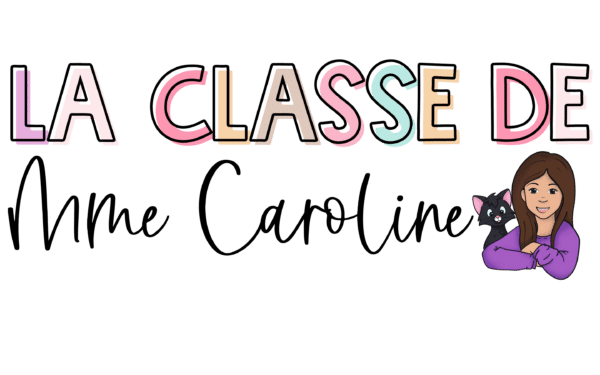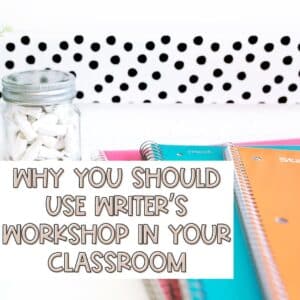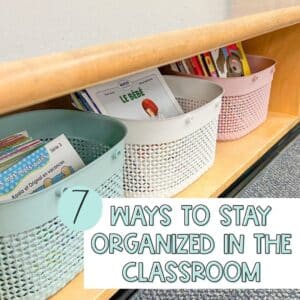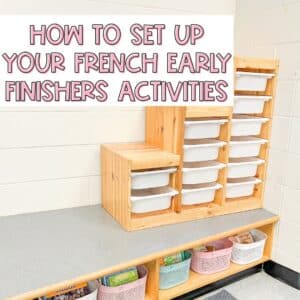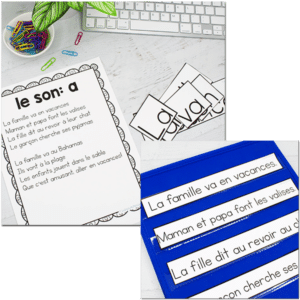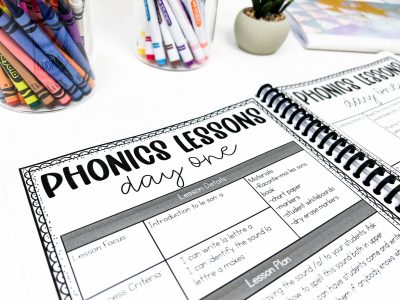Some schools are blessed with a large quantity of science resources. There are beakers and microscopes, gadgets and gizmos. Other schools, unfortunately, aren’t quite so lucky. But you can get an affordable, fun, and educational bunch of science resources for the classroom from Amazon.
I’ve put together a list of some of my favourite primary science resources, perfect for your next science lesson. Let’s get started!
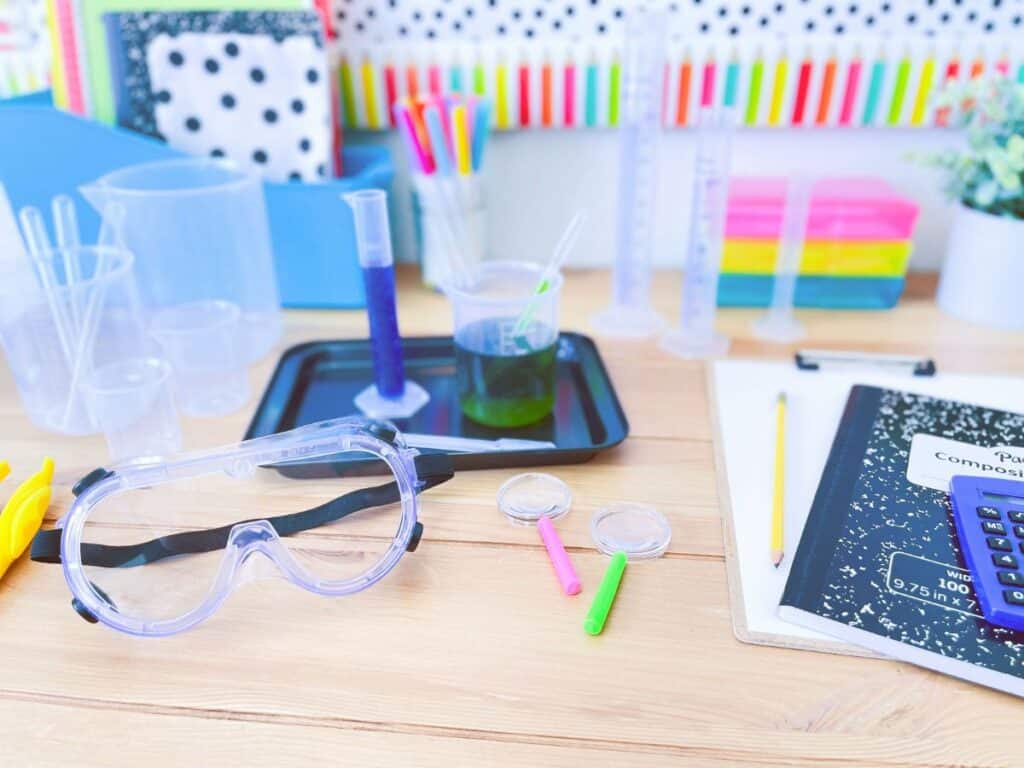
This post may contain affiliate links. Read my disclosure policy.
Top Science Resources for the Classroom
- Coding Bot
- Coding Mouse
- Eye Droppers
- Test Tubes
- Magnetic Wands
- Magnifying Glasses
- Thermometers
- Microscope
- Bug Catching Kit
- Simple Machines Building Kit
- Simply Machine Set
- Recycled Materials
1. Coding Bot
Coding is now a big part of the Ontario science curriculum. With more and more jobs involving coding, from AI to social media, it’s a much-needed skill to teach kids early.
Botley, the Coding Robot, is brilliant for older children aged 5 and above to learn the basics of programming. There are 77 pieces as part of the set, including detachable robot arms, coding cards, double-sided titles, and more. That creates tons of opportunities for activities and learning. You can really get creative with this one!
2. Coding Mouse
Botley is a little advanced for younger children. That’s where this coding mouse comes in. The goal is simple: get the mouse to the cheese. But as you add obstacles and increase the complexity, you’ll begin to introduce core concepts behind coding.
The set comes with setup cards so you can follow their pre-planned layout – or, if you’re feeling creative, you can come up with your own!
3. Eye Droppers
Teaching your class about solids and liquids? Want to showcase how a liquid conforms to the shape of its container or what happens if you add vinegar to baking soda? You’ll need some eyedroppers. They’re brilliant for conducting any chemistry-based experiments and should be one of your primary science resources.
These Jumbo Colourful Eye Droppers come with six droppers with big bulbs, making them easy to hold and squeeze.
4. Test Tubes
No science classroom is complete without a set of test tubes. Discover which solids dissolve in water, how colours mix together, and the different viscosities of liquids (oil and water don’t mix!).
Coming in several colours with a helpful rack, the hand2mind Starter Science Test Tube Set is a must-have primary science resource for the classroom. And it comes with an activity guide to help spark your children’s learning journey.
5. Magnetic Wands
Magnetism is a hard concept for children to grasp – it looks like magic. But, as with everything, seeing is believing. These Magnetic Wands might look single-use, but they’re not! Whenever you’re discussing magnetism in the classroom, get out these wands to check if an object is magnetic.
That could be a paperclip, some iron filings, or even soil. Yes, you can assess the metal content in different soils thanks to these ingenious wands (sand has quite a bit).
6. Magnifying Glasses
Get up close and personal with the world using these magnificent Jumbo Magnifying Glasses. Perfect for children 3+, inspect the details on a shell, the behaviours of a ladybug, or the weave of a fabric.
Any science unit that involves looking at physical things will benefit from this equipment. What do you notice when seeing things up close? What can be seen with a magnifying glass that can’t be seen without one?
7. Thermometers
Temperature is a fundamental part of our world. Teaching children about it is critical to their scientific understanding. It covers everything from hot and cold to the weather and even seasonal changes. Armed with a thermometer, a pencil, and some graph paper, students can learn some life-long scientific skills.
Plot the temperature outside each day and notice the trend over time. Or measure the temperature of water when experimenting with solubility – do things dissolve better in cold or warm water?
These sturdy Student Thermometers display temperature in both Celsius and Fahrenheit – and with ten in a pack, there’s plenty for everyone.
8. Microscope
The microscope is the quintessential science resource for the classroom. Revealing a spectacular world hidden from view, you can get a closer look at anything you’re working on in your science lessons. See the fine details of plants, weird and wonderful bugs, different liquids, and even building materials.
The National Geographic Microscope for Kids is easy to use and comes with a host of implements, including tweezers, pipettes, specimen dishes, and more.
You can teach about two key points: why you can’t see these details with the naked eye and some practical applications of microscopes.
9. Bug Catching Kit
Who doesn’t love catching bugs? It’s a fantastic way to excite and engage young learners, sparking their interest in the environment. The Nature Bound Bug Catcher Set comes with everything you need – a net, tweezers, bug tongs, and a magnifier.
You could use this kit for Grade 1’s Characteristics of Living Things or Grade 2’s Growth and Changes in Animals units.
10. Simple Machines Building Kit
Perfect for the Grade 2 Movement and Simple Machines unit, the Thames & Kosmos Simple Machines Science Experiment & Model Building Kit contains tons of resources to explore basic physics and mechanical engineering.
The building set, in particular, requires a little more thinking and planning to set up. But it’s brilliant for problem-solving and exploring how simple machines make our everyday lives easier.
11. Simply Machine Set
Another machines kit – the Learning Resources Simple Machine Set, teaches children about effort, force, load, and motion. Students can see how a pulley works to reduce the load or how a lever minimises effort. Through these machines, they can develop a deeper understanding of how machines work and kickstart their future career in STEM.
12. Recycled Materials
Of course, the best science resources for the classroom don’t cost a cent! Recycled materials are a cheap, effective way to teach science in a hands-on way. Build a simple machine, get a boat to float, or try the old classic – construct a bridge strong enough to hold a load. The possibilities are endless. All you need is some cardboard boxes, egg cups, toilet paper tubes, and a spark of imagination.
I hope these primary science resources have made you think about your units for the following year. Maybe there are some items you can’t wait to share with your students!

